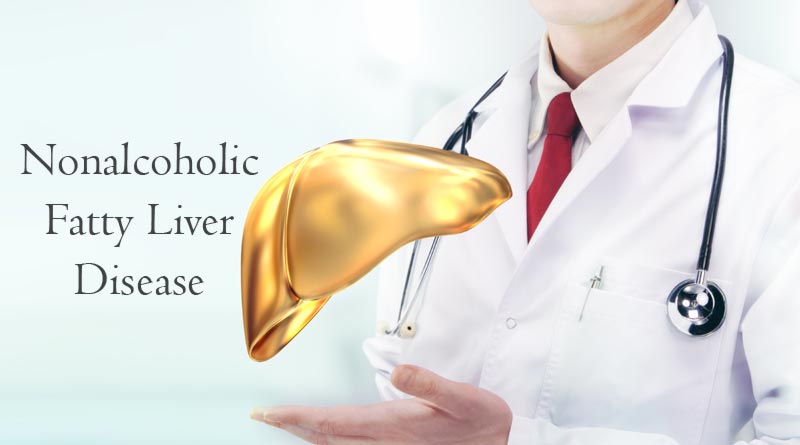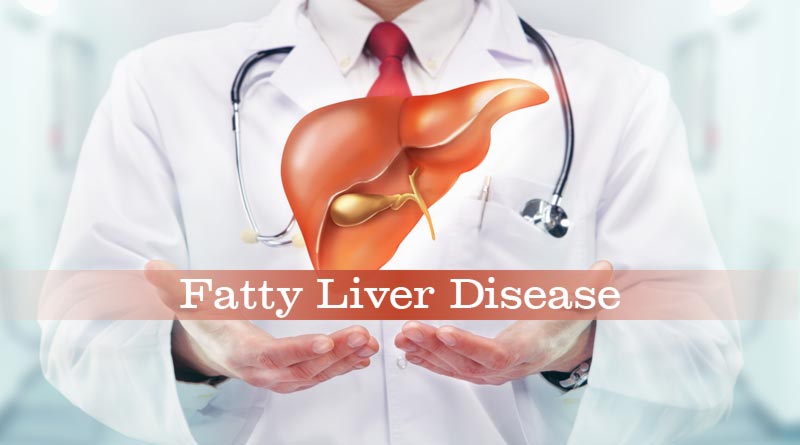Nonalcoholic fatty liver disease
Nonalcoholic fatty liver disease is an umbrella term for a range of liver conditions affecting people who drink little to no alcohol. As the name implies, the main characteristic of nonalcoholic fatty liver disease is too much fat stored in liver cells.
Nonalcoholic steatohepatitis, a potentially serious form of the disease, is marked by liver inflammation, which may progress to scarring and irreversible damage. This damage is similar to the damage caused by heavy alcohol use. At its most severe, nonalcoholic steatohepatitis can progress to cirrhosis and liver failure
Nonalcoholic fatty liver disease is increasingly common around the world, especially in Western nations. In the United States, it is the most common form of chronic liver disease, affecting an estimated 80 to 100 million people.
Nonalcoholic fatty liver disease occurs in every age group but especially in people in their 40s and 50s who are at high risk of heart disease because of such risk factors as obesity and type 2 diabetes. The condition is also closely linked to metabolic syndrome, which is a cluster of abnormalities including increased abdominal fat, poor ability to use the hormone insulin, high blood pressure and high blood levels of triglycerides, a type of fat.
Symptoms
Nonalcoholic fatty liver disease usually causes no signs and symptoms. When it does, they may include:
- Enlarged liver
- Fatigue
- Pain in the upper right abdomen
Possible signs and symptoms of nonalcoholic steatohepatitis and cirrhosis (advanced scarring) include:
- Abdominal swelling (ascites)
- Enlarged blood vessels just beneath the skin’s surface
- Enlarged breasts in men
- Enlarged spleen
- Red palms
- Yellowing of the skin and eyes (jaundice)
When to see a doctor
Make an appointment with your doctor if you have persistent signs and symptoms that cause you concern.
Causes
Experts don’t know exactly why some people accumulate fat in the liver while others do not. Similarly, there is limited understanding of why some fatty livers develop inflammation that progresses to cirrhosis. Nonalcoholic fatty liver disease and nonalcoholic steatohepatitis are both linked to the following:
- Overweight or obesity
- Insulin resistance, in which your cells don’t take up sugar in response to the hormone insulin
- High blood sugar (hyperglycemia), indicating prediabetes or actual type 2 diabetes
- High levels of fats, particularly triglycerides, in the blood
These combined health problems appear to promote the deposit of fat in the liver. For some people, this excess fat acts as a toxin to liver cells, causing liver inflammation and nonalcoholic steatohepatitis, which may lead to a buildup of scar tissue (fibrosis) in the liver.
Risk factors
A wide range of diseases and conditions can increase your risk of nonalcoholic fatty liver disease, including:
- High cholesterol
- High levels of triglycerides in the blood
- Metabolic syndrome
- Obesity, particularly when fat is concentrated in the abdomen
- Polycystic ovary syndrome
- Sleep apnea
- Type 2 diabetes
- Underactive thyroid (hypothyroidism)
- Underactive pituitary gland (hypopituitarism)
Nonalcoholic steatohepatitis is more likely in these groups:
- Older people
- People with diabetes
- People with body fat concentrated in the abdomen
It is difficult to distinguish nonalcoholic fatty liver disease from nonalcoholic steatohepatitis without further testing.
Complications
The main complication of nonalcoholic fatty liver disease and nonalcoholic steatohepatitis is cirrhosis, which is late-stage scarring (fibrosis) in the liver. Cirrhosis occurs in response to liver injury, such as the inflammation in nonalcoholic steatohepatitis. As the liver tries to halt inflammation, it produces areas of scarring (fibrosis). With continued inflammation, fibrosis spreads to take up more and more liver tissue.
If the process isn’t interrupted, cirrhosis can lead to:
- Fluid buildup in the abdomen (ascites)
- Swelling of veins in your esophagus (esophageal varices), which can rupture and bleed
- Confusion, drowsiness and slurred speech (hepatic encephalopathy)
- Liver cancer
- End-stage liver failure, which means the liver has stopped functioning
About 20 percent of people with nonalcoholic steatohepatitis will progress to cirrhosis.
References:
mayoclinic.org
 Parsi Teb Physical and Mental Health Journal
Parsi Teb Physical and Mental Health Journal 
